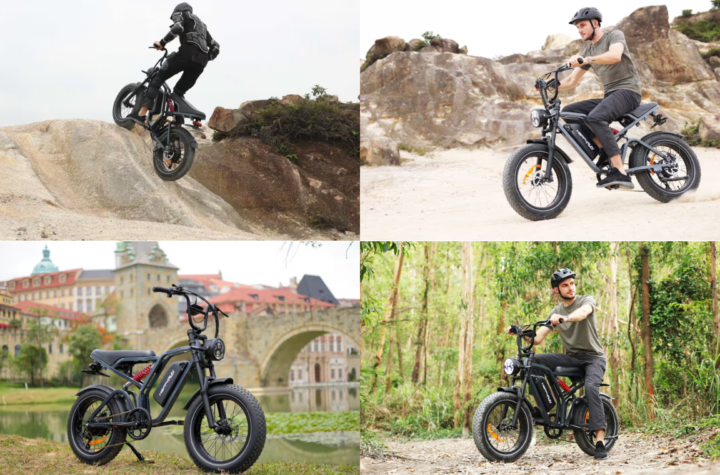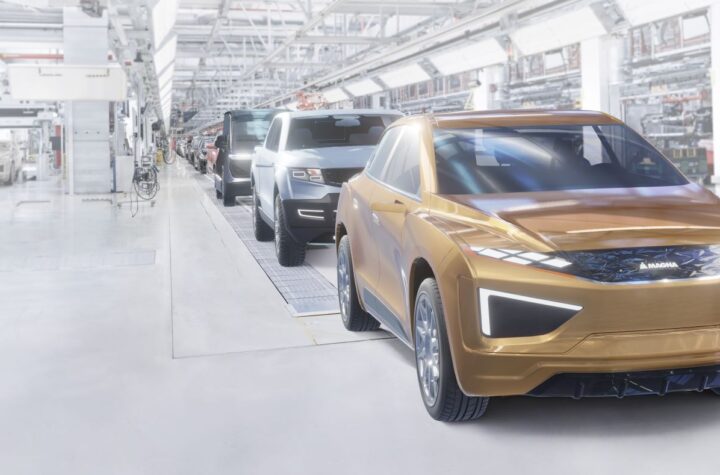
 The profit squeeze from declining vehicle prices and increased raw material costs are leading to a restructuring of the automotive interior supply chain, favoring technologies capable of delivering modules made in fewer unit operations at lower cost. One potential winner in these changing market dynamics is nonwoven technology, a fabric that some say may emerge as the material of choice in several interior applications.
The profit squeeze from declining vehicle prices and increased raw material costs are leading to a restructuring of the automotive interior supply chain, favoring technologies capable of delivering modules made in fewer unit operations at lower cost. One potential winner in these changing market dynamics is nonwoven technology, a fabric that some say may emerge as the material of choice in several interior applications.
Although woven and knitted textiles clearly have the lion’s share of the automotive sector today, nonwoven manufacturers have been steadily improving, developing and presenting their case to Tier 1s and OEMs. Furthermore, now that cost-efficiency, durability, moldability and recyclability are rising to the top of the list of automotive needs, some manufacturers are taking a closer look at recent advancements in nonwoven technology.
Two recent studies by Robert Eller Associates, Inc. (Editor’s note: more information available at www.robertellerassoc.com) have quantified the technology, economics and market potentials of these developments in interior module construction and fabrication technology. The report suggests that nonwovens are gaining momentum in the automotive marketplace either as a direct substitute for wovens and knits currently used in face fabrics or as layers in the construction of most interior modules.
Nonwoven Market Potential
In today’s automobiles, woven or knitted textiles typically provide the aesthetic, functional and tactile properties of the face fabric used as body cloth for seating, headliners and door trim. However, unlike wovens and knits (which involve weaving and knitting steps, respectively), nonwovens are made either directly from molten fibers as they are extruded or from chopped staple fibers laid down as a mat. This direct fabrication offers cost savings when nonwovens are substituted for woven or knit textile face fabrics. The fiber deposition process also offers the potential for the buildup of multiple fiber layers in a thick mat, which can be selectively compressed to target thickness, density and stiffness to achieve a range of semi-structural and acoustic properties not possible with conventional textiles.
Currently, automotive nonwovens are found primarily in carpet and carpet-related products, insulations and the trunk. However, according to Bob Eller, president of Robert Eller Associates, Inc., the new nonwovens with improved aesthetics have the potential to compete with knits and wovens in automotive interior facing fabric applications, in addition to performing as part of the inner layers of the “interior sandwich” used to fabricate seating, headliners and door panels. This versatility combined with the cost-effective nature of the technology, says Eller, is giving nonwovens the promise of rapid growth in interior modules. “In fact, nonwovens may actually change the way these interior modules are fabricated, provide weight savings, lower cost constructions and reshape the interior soft-trim supply chain,” he says. While nonwovens clearly offer cost savings in some interior applications, the cost of nonwoven face fabric is actually much more expensive. “The cost of nonwoven facing may be several times that of knitted and woven fabrics,” explains Ole Hansen, business manager for Alcantara Automotive Division North America, “but non- woven facing is all about added value for the car maker and end consumers who are willing to invest in a superior product.”
While nonwovens clearly offer cost savings in some interior applications, the cost of nonwoven face fabric is actually much more expensive. “The cost of nonwoven facing may be several times that of knitted and woven fabrics,” explains Ole Hansen, business manager for Alcantara Automotive Division North America, “but non- woven facing is all about added value for the car maker and end consumers who are willing to invest in a superior product.”
Emerging Nonwoven Applications
Specifically, new nonwoven applications are emerging in headliners, luxury fabrics and floor/acoustic modules.
Headliners: The major functional layers in the headliner are face fabric, foam backing (to improve acoustic performance and provide a softer touch) and the substrate (or core). A first generation of bicomponent nonwoven PET fiber mats made limited penetration into the headliner core market. (Bi-component fibers have an inner core and lower melting outer sheath configuration. The outer sheath acts as an adhesive at the fiber contact points). Nevertheless, despite their excellent acoustical properties, the first generation PET fibers proved too heavy and had poor heat sag properties under the required headliner loads. Recently, a second generation of bi-component PET fibers has been introduced by fiber suppliers and is under evaluation by Tier 1 suppliers. These second-generation PET fibers offer improved acoustical properties, the capability of replacing some or all of the foam in the face fabric/foam laminate, and greater load-carrying under the required heat exposure conditions. Load-carrying becomes more important as side curtain airbags and head impact countermeasures are incorporated into the headliner construction.
The PET fiber headliner core has the additional benefit of potentially providing a lighter weight, easily recyclable, mono-material (all PET) construction consisting of nonwoven face fabric/nonwoven backing/nonwoven semi-structural core.
PET fibers are not alone in their effort to replace the incumbent wet and dry glass fiber reinforced PU foam headliner cores. Polyolefin foams have recently been introduced by German foam supplier Trocellen GmbH as headliner core candidates. Eller expects the nonwoven fiber vs- foam battles in headliner cores and textile/foam laminates will extend to other interior modules, especially in the floor/acoustics product segment.
Luxury fabrics: Suede-like luxury fabrics such as Alcantara- (manufactured by Italian supplier Alcantara SpA, a subsidiary of Toray Microfibers Division) are based on nonwoven ultra-micro-fiber constructions. They began their penetration of the European face fabric market (currently a two percent share of the European face fabric segment according to the Eller soft trim study) and are starting to penetrate the North American fleet in door medallions, seating inserts, pillar trim and headliners. Alcantara Automotive Division opened its first U.S. office in Troy, Mich., last January.
Floor/acoustic modules: The major functions of the floor module include surface (carpeting); carpet backing; acoustic absorbers; acoustic damping; and semi-structural (gaining importance, Eller points out, as load floors become more sophisticated and floor stowage solutions gain popularity).
Nonwovens in various forms can fulfill all of these floor/acoustics functions. As fiber diameter decreases, acoustic properties improve, and it is possible that a significant portion of the acoustic functions (both absorption and damping) can be provided at considerable weight savings. When low-density nonwovens are compressed, it is possible to make semi-structural composites for load floors and stowage bins.
“Our studies show that nonwovens are not quite there yet in all interior fabric applications,” Eller concedes, “but as in the case of headliners, it is possible to make floor modules from nonwovens that combine these functions at considerable weight savings, adequate acoustic properties and potential systems cost savings while streamlining the supply chain.”
European vs. North American Preferences
The state of fabrication technology evolution and material substitution differ between North America and Europe. European Tier 1s and their suppliers are migrating to North America, driven by the weak dollar and the North American OEMs’ interest in European fabrication knowhow and the “European look.” As a result, Eller says the technologies between the two regions are converging. Some of the differences and similarities as they affect interior soft trim and the use of nonwovens are shown in Table 1.
Eller says the new-generation nonwovens offer automotive interior suppliers the potential for:
- Net systems cost savings via supply chain streamlining
- Improved surface aesthetics to compete with the incumbent knit and woven textiles in headliner, pillar trim and door trim
- Acoustic properties at a weight savings
- Opportunities for textile suppliers struggling with profitability to add value to their products
- Weight savings
- More easily recyclable mono-material constructions
- Semi-structural properties
Typical Automotive Applications for Nonwovens
Nonwovens perform three types of functions in vehicle interior soft trim:
Construction fabrics: Nonwovens are used extensively as backing for tufted carpet; barrier layers or scrim in molded sandwiches (such as headliners and door medallions); in the nonvisible surfaces of seat covers used to hold the surface textiles in place (via the under-seat J-hook); and to provide an inexpensive surface for the interior of rear seat map pockets.
Carpeting: Nonwovens are used as the surface layer in both North American and European dash mats, trunk floors and package trays. For the passenger compartment floor, European OEMs primarily use nonwovens, while in North America tufted carpet dominates (thereby creating a large market for nonwoven carpet backing).
Face fabrics: Knit and woven textiles dominate face fabric applications and have done so for years, but nonwovens — primarily those based on polyester (PET) — have begun to penetrate the headliner face fabric market, particularly in Europe. Although North American OEMs are still heavily committed to nylon knits for headliner and pillar trim face fabrics, by combining several layers of different nonwoven types and weights it may be possible to eliminate the flame laminated polyurethane (PU) sheet foam layer that is normally used in headliner constructions. Eliminating the foam lamination step is one example of fiber vs. foam competition and represents the potential to streamline the supply chain while adding value to the nonwovens supplier’s product.
Current Conditions Driving Nonwovens Growth
- Raw material price increases coupled with severe OEM price pressures have textile suppliers in severe profitability squeeze
- Intense OEM cost pressures will drive fabrication technology shifts and materials innovation
- The penetration of European Tier 1s into the North American interiors market is introducing new, cost-effective nonwoven fabrication technology and shifting textile preferences and trends
- Advanced nonwovens technologies and new polyolefin resin technologies offer underexploited benefits to automotive interior module fabricators
- Growth in non-structural composites will drive shifts in textile usage toward nonwovens (especially in headliner and floor modules)
- Recently developed polyolefin resin technology can be used to make elastic nonwovens. These elastic nonwoven constructions create value via improved craftsmanship and reduced processing costs
- European End of Life Vehicle (ELV) legislation is driving mono-material constructions for easier vehicle recyclability, encouraging use of polyolefin nonwovens in constructions with polyolefin foams and polypropylene substrates
- Increased penetration of polyolefin foams will pull polyolefin nonwovens into the interiors market due to the competitive interface between nonwovens and foams
- Most major interior modules will undergo construction and fabrication process changes (especially headliner, floor/acoustics and trunk) that will offer opportunities for nonwovens to gain market share and enhance added value
- Acoustic performance and energy absorption will be major technology shift drivers — nonwovens offer key advantages in those areas













More Stories
From Gasoline Powered Cars To Electric Vehicles | Electric Moped Bike A Best Alternative
Rubbernecking: A Silly Reason for Car Accidents
Flexible Magna Manufacturing Solutions: The Key to Success in the Automotive Industry